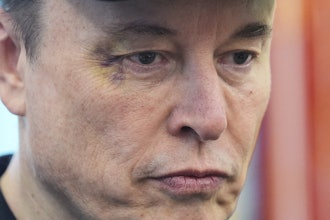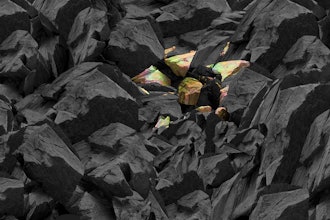A newly revealed 3D printer can print up to 100 times faster than conventional additive manufacturing thanks to its ability to “grow” materials upward from a pool of liquid, Carbon3D said at the TED conference on March 16. Their debut technology is a printer that uses their Continuous Liquid Interface Production (CLIP) technology, which builds material upward in a continuous stream.
Read: 3D Printing Tech Enables Objects to Rise from Liquid
It works using light: UV light triggers polymerization, the creation of three-dimensional polymers, while oxygen inhibits the reaction. The careful control of both of them governs the polymers.
The shape of the object printed is determined by a series of cross-sectional images of a 3D model, which are displayed underneath a pool of liquid, UV curable resin. Between the image and the pool of resin is a microscopic “dead zone,” a layer of resin where photopolymerization cannot occur. The object rises up out of the pool, and the build platform rises with it in order to allow it to keep growing.
Dr. Joseph DeSimone, the CEO and co-founder of Carbon3D, said that “current 3D printing technology has failed to deliver on its promise to revolutionize manufacturing.”
That’s part of why he wanted to find a new, completely different method. “Our CLIP technology offers the game-changing speed, consistent mechanical properties and choice of materials required for complex commercial quality parts,” he said.
The Carbon3D printer can be used with a broad range of polymeric materials. Third party tests commissioned by Carbon3D revealed that CLIP took about 6 minutes to print a 51 millimeter complex object, which would take hours on a conventional printer. Parts come out more like injection-molded objects than like 3D printed ones, without any layers.
Carbon3D had received financing in 2013, ending Series B financing in 2014 with $40 million, which will go toward commercializing the technology. They were supported by Sequoia, a financial backer that has had such high-profile clients as Steve Jobs and Elon Musk.





















